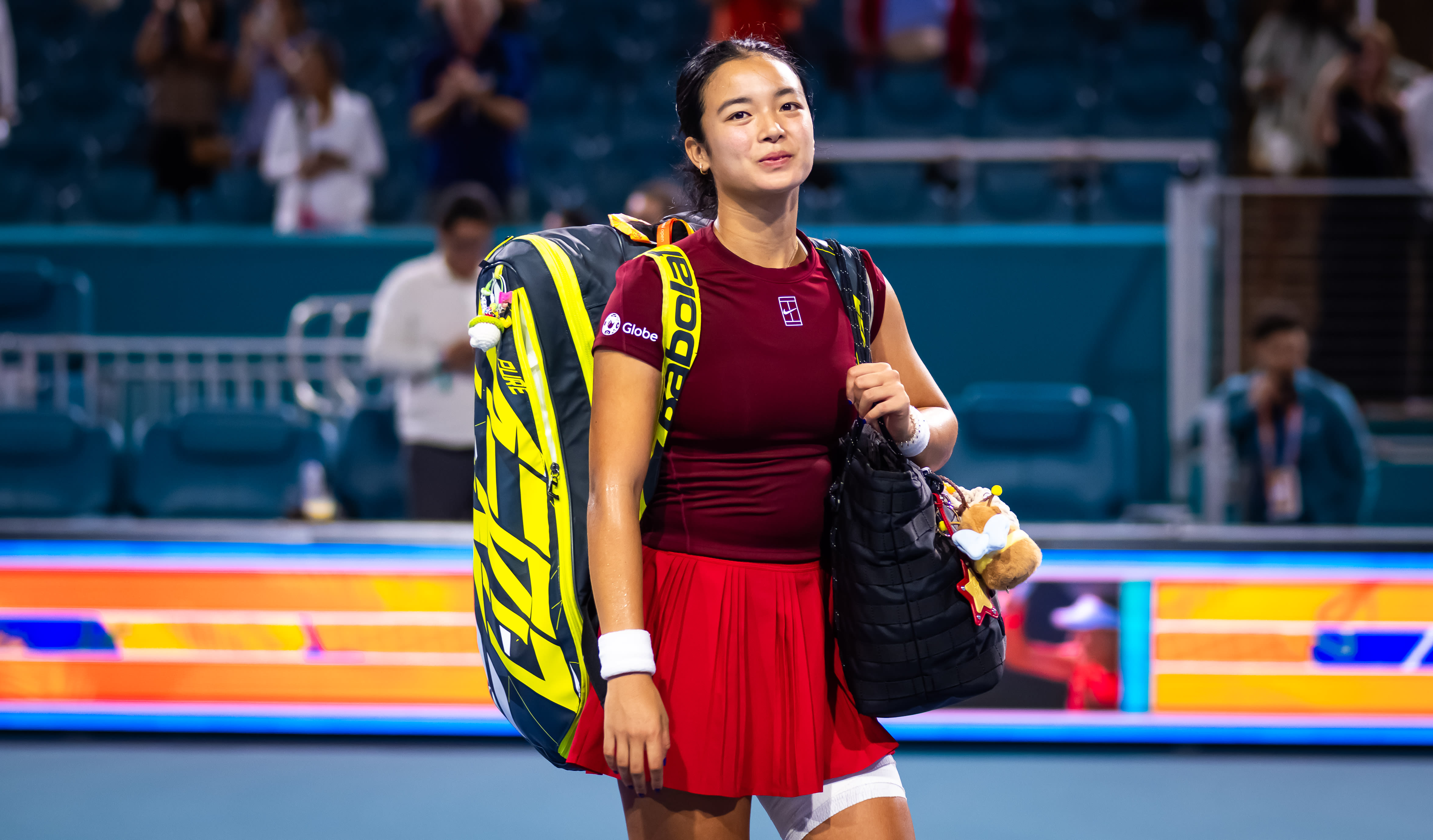Passport Barriers: Alexandra Eala's Global Journey Reveals Harsh Travel Realities
Lifestyle
2025-04-14 13:16:55Content

For Filipino tennis players, the journey to international competition is fraught with unique challenges. The Philippine passport's limited global mobility—offering visa-free or visa-on-arrival access to just 65 countries and territories—creates significant barriers in a sport that demands seamless international travel. This restricted passport status transforms what should be a straightforward athletic pursuit into a complex logistical puzzle, requiring extra planning, additional documentation, and substantial financial resources for visa applications.
Professional tennis thrives on global connectivity, with tournaments spanning continents and athletes frequently crossing borders. However, Philippine tennis talents find themselves navigating a more complicated path, where travel restrictions can potentially interrupt training schedules, tournament participation, and career development. Each international competition becomes not just an athletic challenge, but a bureaucratic hurdle that tests the resilience and determination of Filipino players.
The limited passport accessibility underscores the need for strategic diplomatic efforts and continued support for athletes who dream of competing on the world stage. Despite these obstacles, Filipino tennis players continue to demonstrate remarkable adaptability and passion, proving that true sporting excellence knows no geographical boundaries.
Breaking Barriers: The Global Tennis Journey of Philippine Athletes
In the dynamic world of international tennis, athletes from the Philippines face unique challenges that extend far beyond the court. The intricate landscape of global sports competition intertwines with diplomatic complexities, creating a nuanced narrative of ambition, resilience, and international mobility.Navigating Passport Limitations in Professional Tennis
The Diplomatic Passport Challenge
Philippine tennis professionals encounter significant hurdles when pursuing international tournaments. With visa access restricted to merely 65 countries and territories, athletes must navigate a complex web of diplomatic restrictions that can potentially derail career trajectories. These limitations transform routine travel into strategic planning, requiring meticulous preparation and extraordinary determination. The passport constraint represents more than a bureaucratic obstacle; it symbolizes a profound systemic challenge for emerging athletes. Each international tournament becomes a complex negotiation of legal permissions, travel logistics, and personal aspirations. Philippine tennis players must develop exceptional adaptability, transforming potential barriers into opportunities for growth and strategic networking.Overcoming Systemic Barriers in International Sports
Professional tennis demands not just athletic excellence, but also remarkable administrative agility. Philippine athletes must cultivate sophisticated strategies to circumvent travel restrictions, often involving extensive visa applications, sponsorship negotiations, and diplomatic interventions. These challenges demand a multifaceted approach that extends well beyond traditional athletic training. The journey requires building robust international relationships, leveraging diplomatic channels, and developing comprehensive support networks. Successful athletes transform potential limitations into unique competitive advantages, demonstrating remarkable resilience and strategic thinking that transcends traditional sporting paradigms.Economic and Diplomatic Implications
The visa restriction phenomenon highlights broader economic and diplomatic dynamics affecting Philippine sports professionals. Each international tournament becomes a microcosm of complex geopolitical interactions, where individual athletes represent national aspirations and diplomatic potential. These challenges necessitate innovative approaches from sports federations, governmental institutions, and international sporting organizations. Collaborative strategies must emerge to create more inclusive pathways for athletes from countries with limited global mobility, ensuring that talent is not constrained by bureaucratic limitations.Technological and Strategic Innovations
Modern technology and strategic networking have become crucial tools for Philippine tennis professionals navigating international landscapes. Digital platforms, advanced communication technologies, and strategic partnerships provide alternative pathways for overcoming traditional travel restrictions. Athletes increasingly leverage social media, virtual training platforms, and international sponsorship networks to expand their global reach. These technological interventions create unprecedented opportunities for transcending geographical and diplomatic boundaries, reimagining the very concept of international sports participation.Personal Narratives of Resilience
Behind statistical limitations lie profound personal narratives of determination and passion. Each Philippine tennis athlete represents a complex story of individual ambition intersecting with systemic challenges. Their journeys embody remarkable human potential to transform obstacles into stepping stones of extraordinary achievement. These athletes become ambassadors not just of sporting excellence, but of national pride and individual resilience. Their stories inspire future generations, demonstrating that true athletic potential cannot be constrained by bureaucratic limitations or geographical boundaries.RELATED NEWS
Lifestyle

Design Revolution: Zuo Modern Unveils Cutting-Edge 2025 Lifestyle Collection
2025-03-13 14:10:51
Lifestyle

The Great Matzo Ball Divide: Floating vs. Sinking - A Culinary Controversy Unveiled
2025-04-12 13:29:00
Lifestyle

Springtime Wellness: 3 Transformative Strategies to Revitalize Your Health
2025-04-21 19:00:00





